The cicadas are coming! If you live in the Midwest or Southeastern United States, you are probably used to the seasonal serenades of these large, boisterous bugs. This year, however, you will be treated to a double dose of cicadas.
That is because two different cycles of cicada broods are due to emerge from the ground this year … a rare event that hasn’t happened since Thomas Jefferson was president. Here is what you should anticipate if you live in the cicadas’ natural range.
The Life Cycle of Cicadas
Cicadas are fascinating insects for a number of reasons. First, they have the longest known life cycle in the insect world. When the cicada nymphs hatch from their eggs, they bury themselves in the ground where they live in the wingless nymph stage of their life cycle for either 13 or 17 years, depending on the variety.
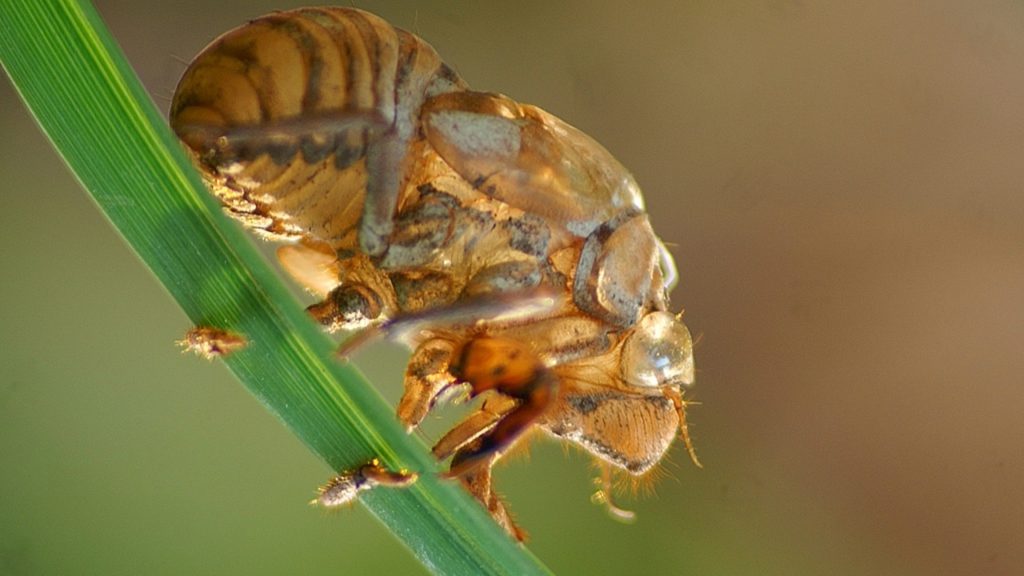
Once the 13-year-old or 17-year-old cicadas emerge from the ground, they have sprouted wings and are mature adults. Adulthood for cicadas, however, is short-lived. They spend four to six weeks above ground where they mate and lay eggs before they die. The cycle begins again with the newly laid eggs.
A New Cycle Starts Every Year
Every year, a new brood of cicadas emerges from the ground as their 13- or 17-year-cycle reaches its conclusion. That’s why we see and hear cicadas every spring, not every 13th or 17th spring.

How do the insects know when it is time to emerge from the ground? Biologists aren’t quite sure. They theorize, however, that the insects in the nymph stage have an internal gauge that marks the passage of the years. The insects may also pick up environmental clues to note the cycles of the seasons.
Why Have Cicadas Evolved to Live Underground?
It may seem odd that cicadas live nearly all of their lives underground, but scientists believe they know why these insects evolved to embrace subterranean life. Because it is safer.

There are more predators on the surface that are eager to dine on cicadas. Birds, reptiles, fish, raccoons, and even bears find cicadas to be a tasty treat. Cicadas face fewer predators underground.
The Convergence of Two Broods
Broods of cicadas are numbered using Roman numerals based on the year of emergence. Seventeen-year broods are designated with numbers XVII and less. Thirteen-year broods bear numbers between XVIII and XXX.
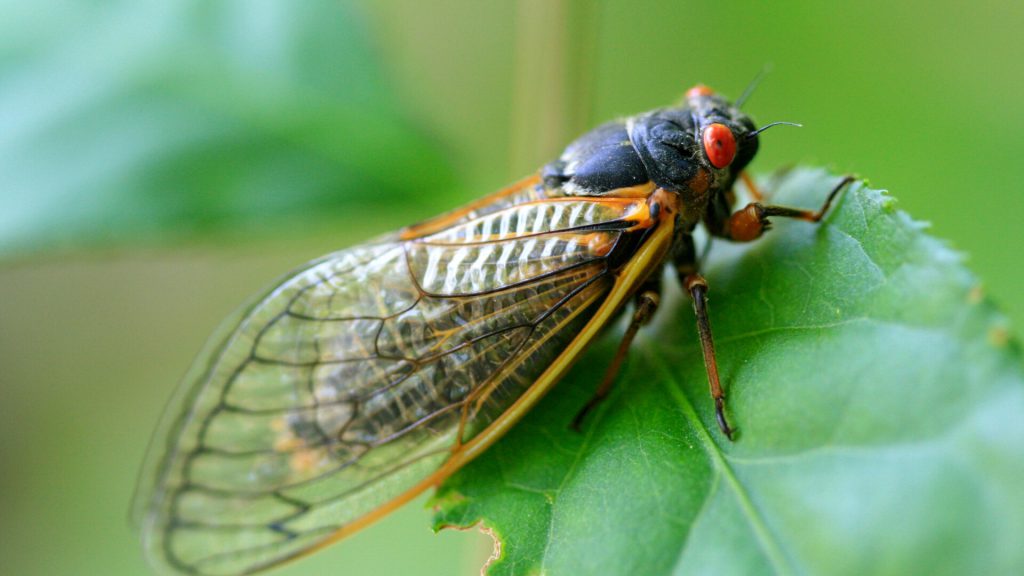
This year marks the convergence of two broods, Brood XIX of 13-year cicadas and Brood XIII of 17-year cicadas. Brood XIX is typically the largest of all the broods. Usually, when the 13-year and 17-year cicada broods emerge at the same time, the insects are in different geographic areas. But not this year.
17 States Are Expecting a Plethora of Cicadas
According to experts, the emergence of Brood XIX will impact people living in Virginia, South Carolina, North Carolina, Georgia, Tennessee, Kentucky, Alabama, Arkansas, Oklahoma, Missouri, Illinois, Iowa, Indiana, Mississippi, and Louisiana.
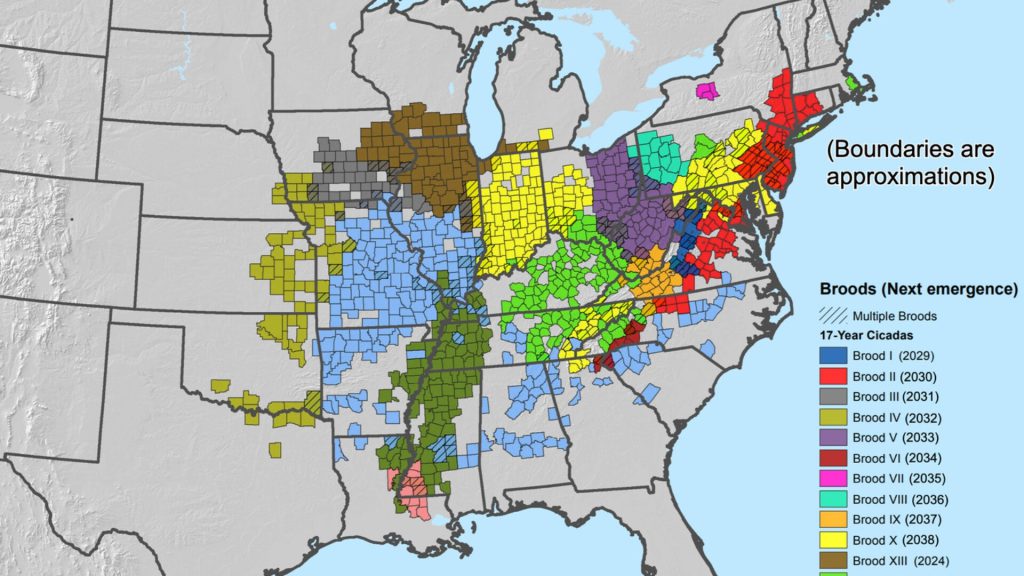
Brood XIII, on the other hand, will emerge in Wisconsin, Indiana, Iowa, Illinois, and the very southwestern corner of Michigan. The broods will overlap in Illinois, Indiana, and Iowa.
A Dual Emergence
The two broods set to emerge this year – Brood XIX and Brood XIII – are in the same geographic area. That means when the broods emerge, there will be a lot more cicadas than we are used to seeing.
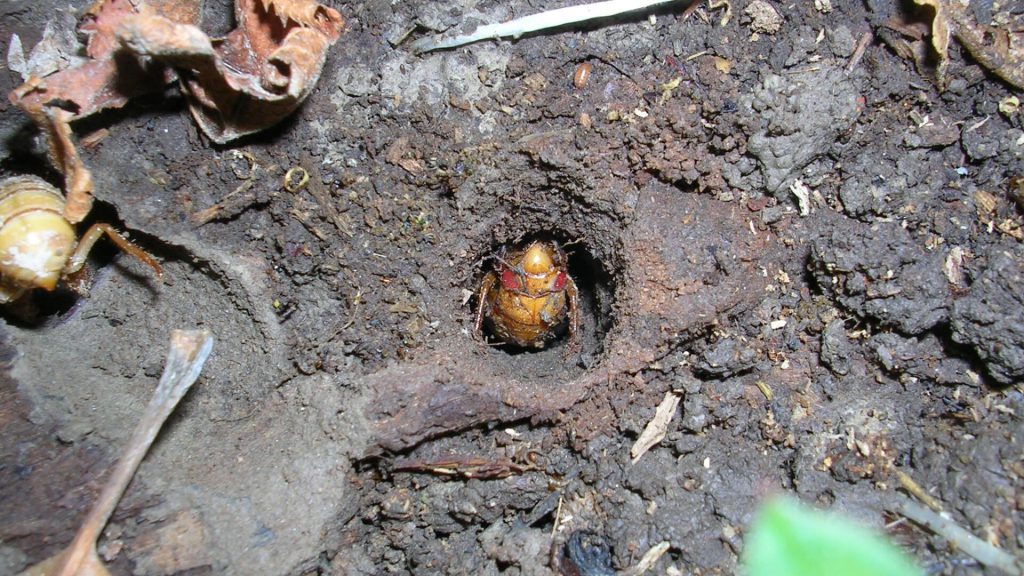
The dual emergence of cicadas is a rare occurrence. Just how rare? The last time this happened was in 1803. At that time, Thomas Jefferson was president and only a handful of the impacted states – Georgia, Virginia, Kentucky, Tennessee, and North and South Dakota – had gained statehood.
When Should You Expect to See Cicadas?
Cicadas typically emerge from the ground any time between mid-April and the end of May. These insects may be able to keep track of the passage of years, but they aren’t bound to the date of the calendar. They rely on soil temperature.

Before they make their appearance topside, cicadas wait until the soil temperature is just right. When the soil temperature about eight inches deep hits 64 degrees Fahrenheit, the cicadas know conditions are right to emerge. When it is, they will all pop out at once.
A Staggered Emergence of Insects
Because soil temperatures differ in different parts of the country, the emergence of cicadas will be staggered. As Dr. Eric Benson, Professor Emeritus and Extension Entomology with Clemson University, explained, “The periodical cicadas from Brood XIX have started to emerge.”

He added, “In 2011 our first recorded periodical cicada emergence was on April 11 in the Augusta, Georgia/South Carolina area. They emerged again in the same area on April 11, 2024! That is amazing to me!”
Clinging to Trees and Fence Posts
When cicadas emerge, they will have a few things on their to-do lists that they will immediately start working on. First, they will find the nearest vertical surface and cling to it. Most of the time, their vertical surface of choice will be tree trunks, but they may also attach themselves to fence posts, utility poles, or the sides of buildings.
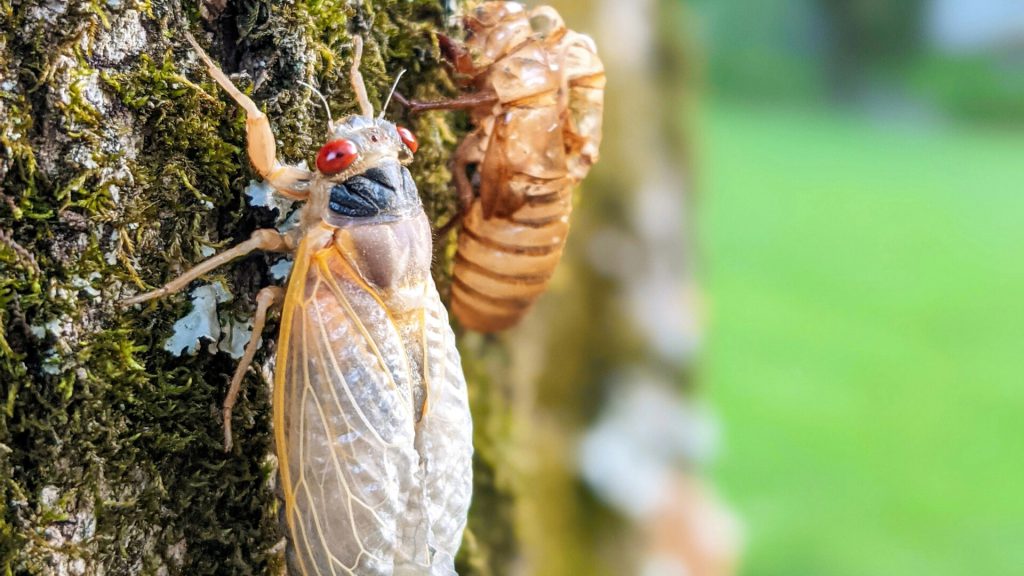
On these vertical surfaces, the insects will wiggle free of their hard exoskeletons. This will be the last molt cycle of their lives. When they shed their exoskeletons, they will have wings for the first time in their existence. They will use these wings to fly to the tops of trees.
The Mating Call of the Cicadas
Cicadas have a reputation for being noisy. The dual emergence of these insects will, undoubtedly, increase the noise level during their month and a half in the surface world. Only the male cicadas make noise. This is their mating call.
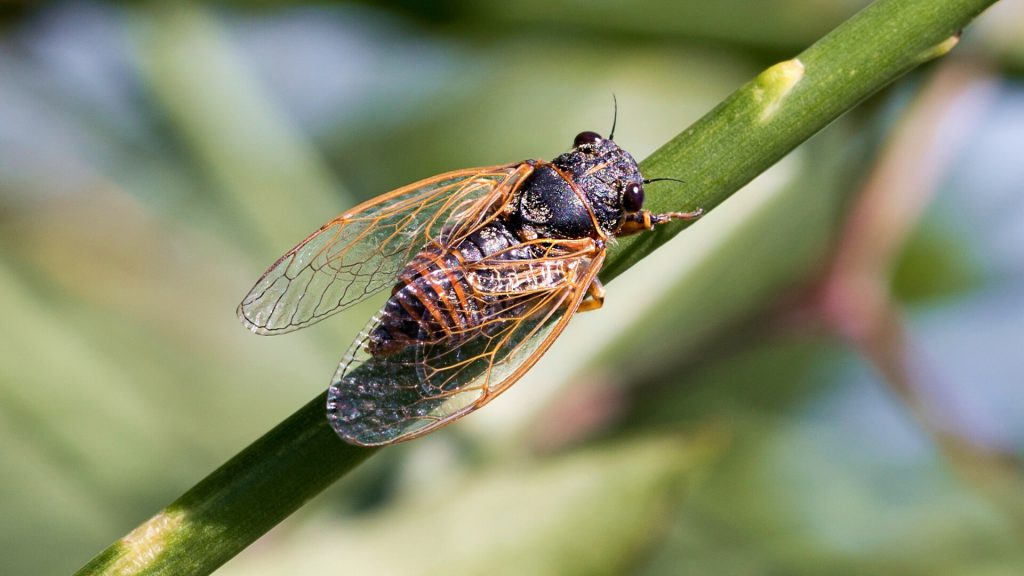
The memes going around social media insinuate that cicadas will scream at the top of their lungs for several weeks. In reality, the bugs make this droning sound by vibrating their abdomen muscles at a rate of hundreds of times per second.
Expect a Cacophony of Noise
In typical years, the sound of cicadas can be annoying. The noise is on a par with that of lawn mowers on the sound decibel chart. Paula Shrewsbury, professor of entomology at the University of Maryland, agreed. “When they say it’s as loud as a lawn mower, it is as loud as a lawn mower.”

She added, “We live near an airport, and when the planes are flying over…cicadas crank up their sound level, it’s like they’re competing with the airplanes for sound.” More cicadas mean more noise. Folks living in areas impacted by the dual emergence can expect a cacophony of noise for a few weeks.
Are Cicadas Destructive?
During their six weeks or so above ground, cicadas will need to eat. Does that mean the insects will destroy your gardens and devour your landscaping? Probably not. According to John Lill, biology professor at George Washington University, noted, “Cicadas are unlikely to cause any irreparable damage to plants, trees, vegetable patches, or flower beds.”

Cicadas will be so busy mating, laying eggs, or fertilizing eggs to spend their time gorging themselves. The females, however, may cause plant damage when they make V-shape cuts and deposit their eggs in the plant material. The stem may suffer, but the plant will survive.
Cicadas Pose No Threat to People or Pets
Unlike wasps, spiders, mosquitoes, or ticks, cicadas don’t bite or sting. They are not poisonous and are not vectors for disease. They pose no danger to people or pets.

Lill did state, however, that he once had to take his own dog to the veterinary because of cicadas. The problem was that his dog ate so many of the insects that it got a tummy ache. The dog was fine the next day. Eating too many cicadas may not be good for the stomach, but as we will see next, these insects are edible.
Dining on Cicadas
Birds, reptiles, and mammals love to snack on cicadas. The increased number of cicadas this year may mean you will see an increase in animals that prey on cicadas. If you are an adventurous sort, you can even sample a few cicadas yourself.

By most accounts, cicadas are quite tasty. They supposedly have a sweet, nutty flavor. The U.S. Food and Drug Administration has issued a warning about eating cicadas. Since the insects are distantly related to lobsters and shrimp, people with seafood allergies should refrain from eating cicadas.
Please Don’t Spray the Cicadas
According to experts, we can expect trillions of cicadas to emerge this year. That’s a lot of insects. It may be tempting to try to get rid of the cicadas, especially if their noise is bothersome.

The experts ask that the public please refrain from spraying insecticides or pesticides on the cicadas. They won’t hurt you and they will die out soon enough. These incredible insects have only a short time above ground to mate and reproduce. Let them do their thing and leave them alone.
Don’t Be Scared
Cicadas are larger than most other insects and they can be a bit intimidating. Naturalists remind us that cicadas are harmless, despite their appearance and their numbers. Instead, take time to enjoy the rare dual emergence of cicadas.
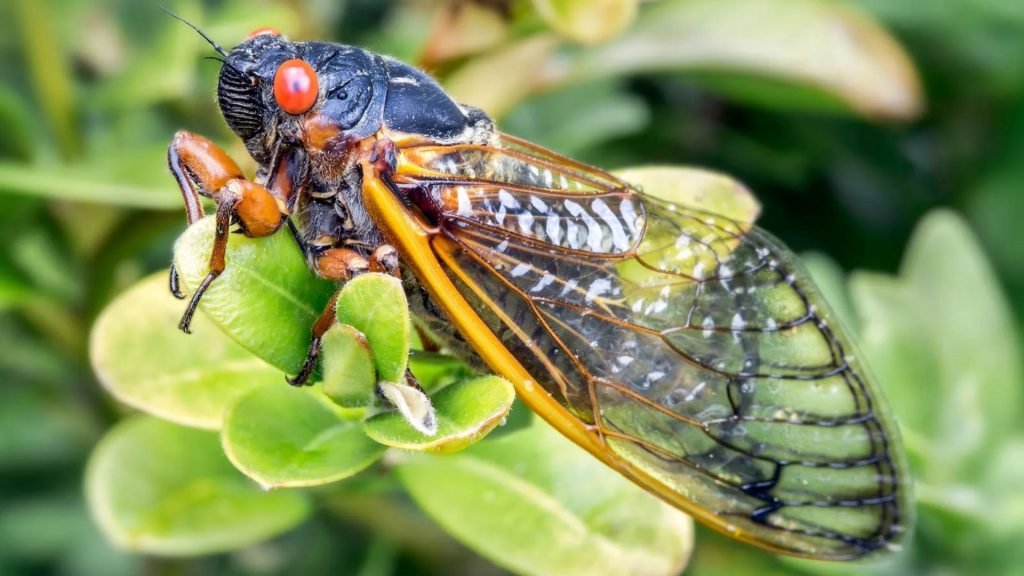
According to Dr. Chris Simon, a senior research scientist with the University of Connecticut, the dual emergence of cicadas “is one of the wonders of the world. This will be an event to remember if you are lucky enough to have them in your neighborhood!”






